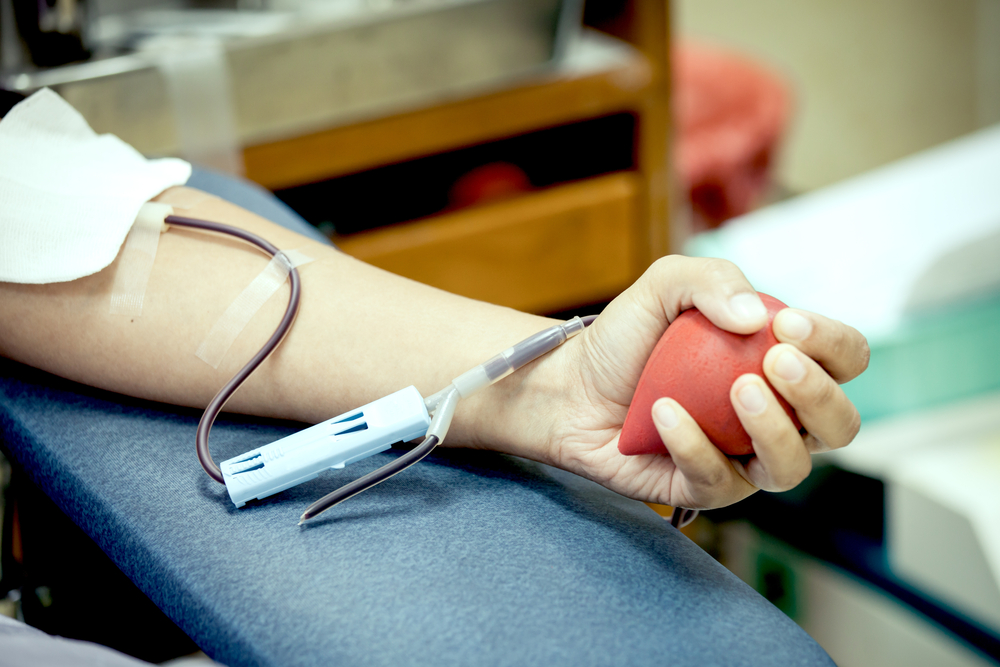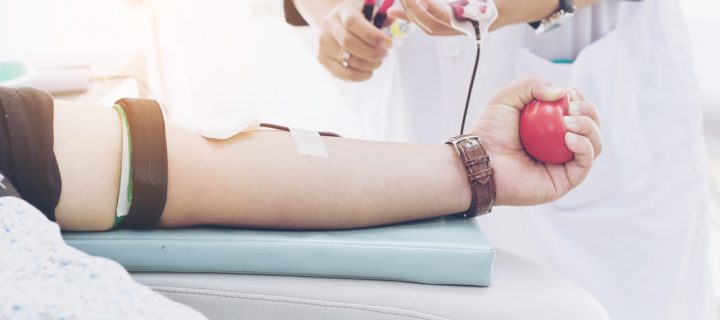Justin Kreuter, MD, medical director of the Mayo Clinic Blood Donor Center in Rochester, Minnesota shared some of the finer details of donating blood with Health, and these are the four key points he wants potential donors to be aware of:
Donor eligibility is always changing
The Red Cross regularly updates an alphabetical list of eligibility criteria for potential donors—from acupuncture (thumbs up) to Zika (thumbs down)—and is the go-to resource on whether you’re okay to donate blood or not.

Yes, it’s okay to have a cookie after you donate
“What’s healthy is to keep a balanced diet as you go forward in the day [after your donation],” Dr. Kreuter says. “We tend to stock our canteen area with things like water and juice and then salty snacks, because salt helps you retain a little more of the [water] volume that you’ve lost through donation. The cookies are there because [they’re] something the donor culture has grown up in—maybe not the healthiest option, but certainly an expectation. Believe it or not, I have meetings about cookies. I’ve seen shirts before that say ‘I donate for the cookies.’”
TLDR; Rewarding yourself with a treat is perfectly fine, assuming you indulge in moderation.
Related: How Will ‘Powdered Blood’ Change Medicine?
Don’t forget to donate your voice
Those humblebrag posts on social media may be annoying, but they can act as a form of benevolent peer pressure, similar to ‘I voted for’ stickers and pins we wear during election season.
“Hearing about blood donation from a friend or colleague is very motivating in getting [potential first-timers] to think about taking that next step,” Dr. Kreuter says. “Our donor population [in Rochester] has an older average age, and we’re trying to reach out to the younger generation to start having the same blood donation habits.”
It won’t hurt!
Blood donation needles are a bit bigger than the ones used for a flu shot, but that ‘small pinch’ you’ll feel is literally that – small.
“What we feel [at the start of a blood draw] is just on the surface of our skin. These needles have silicone on them, they’re made to glide and be quite comfortable. After that initial stick, you’re not going to feel anything,” Dr. Kreuter says.
If needles give you the general willies, just look away for that half-second its inserted, then ask for the insertion site to be covered up so you don’t have to see it. The tough part is over! Now, get that free cookie and juice.
Photo Credit: Happy cake Happy cafe/Shutterstock.com; A3Pfamily/Shutterstock.com












